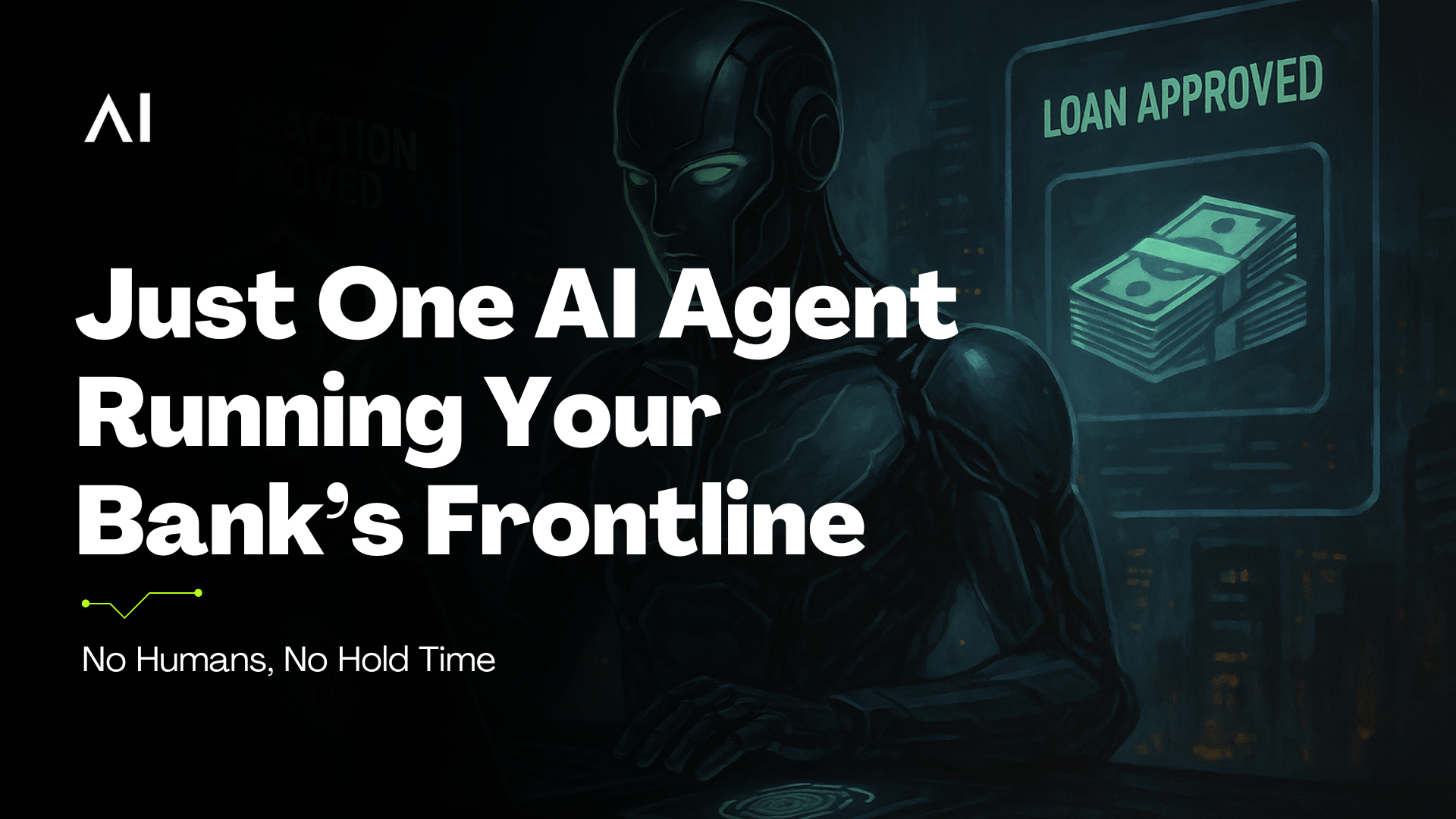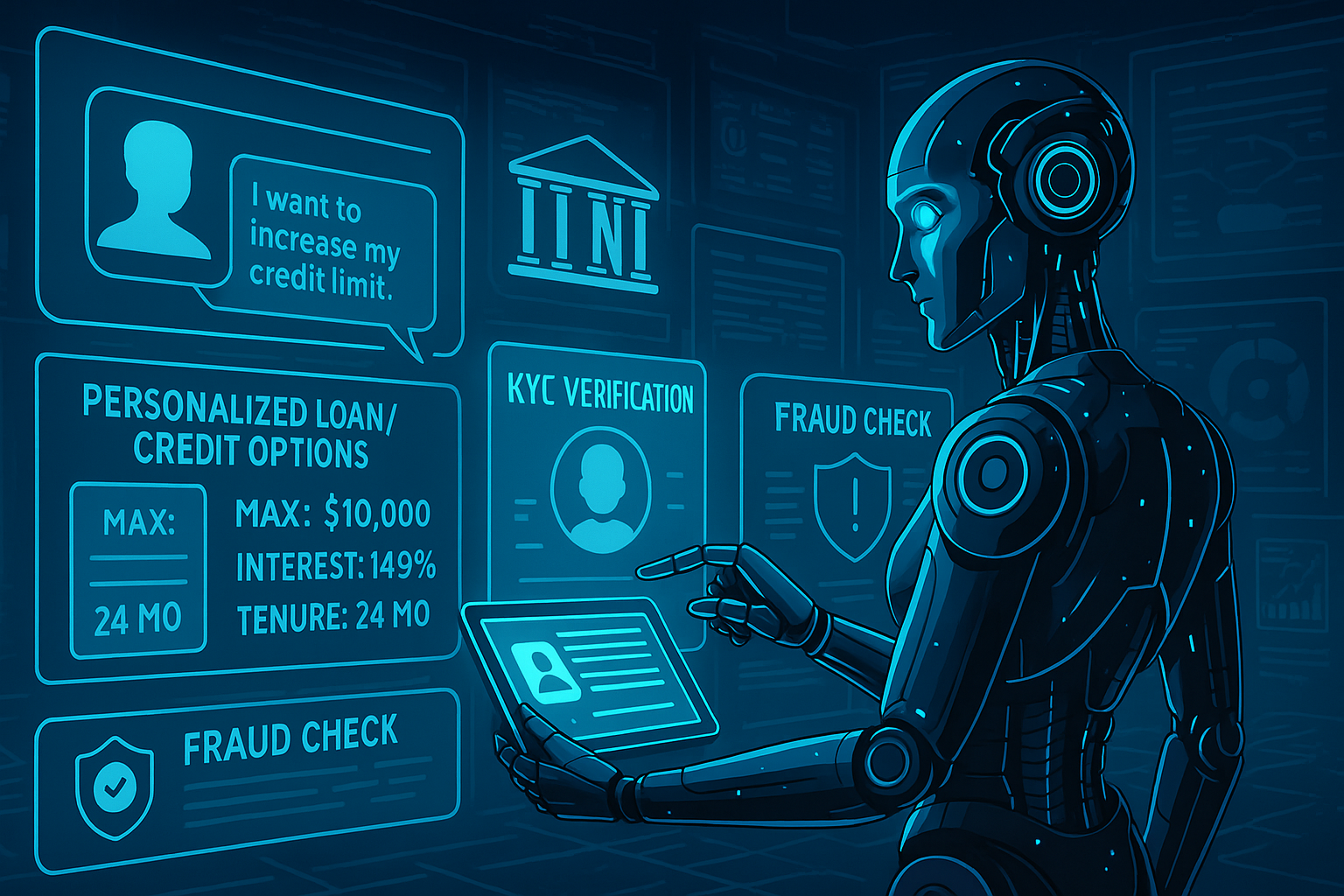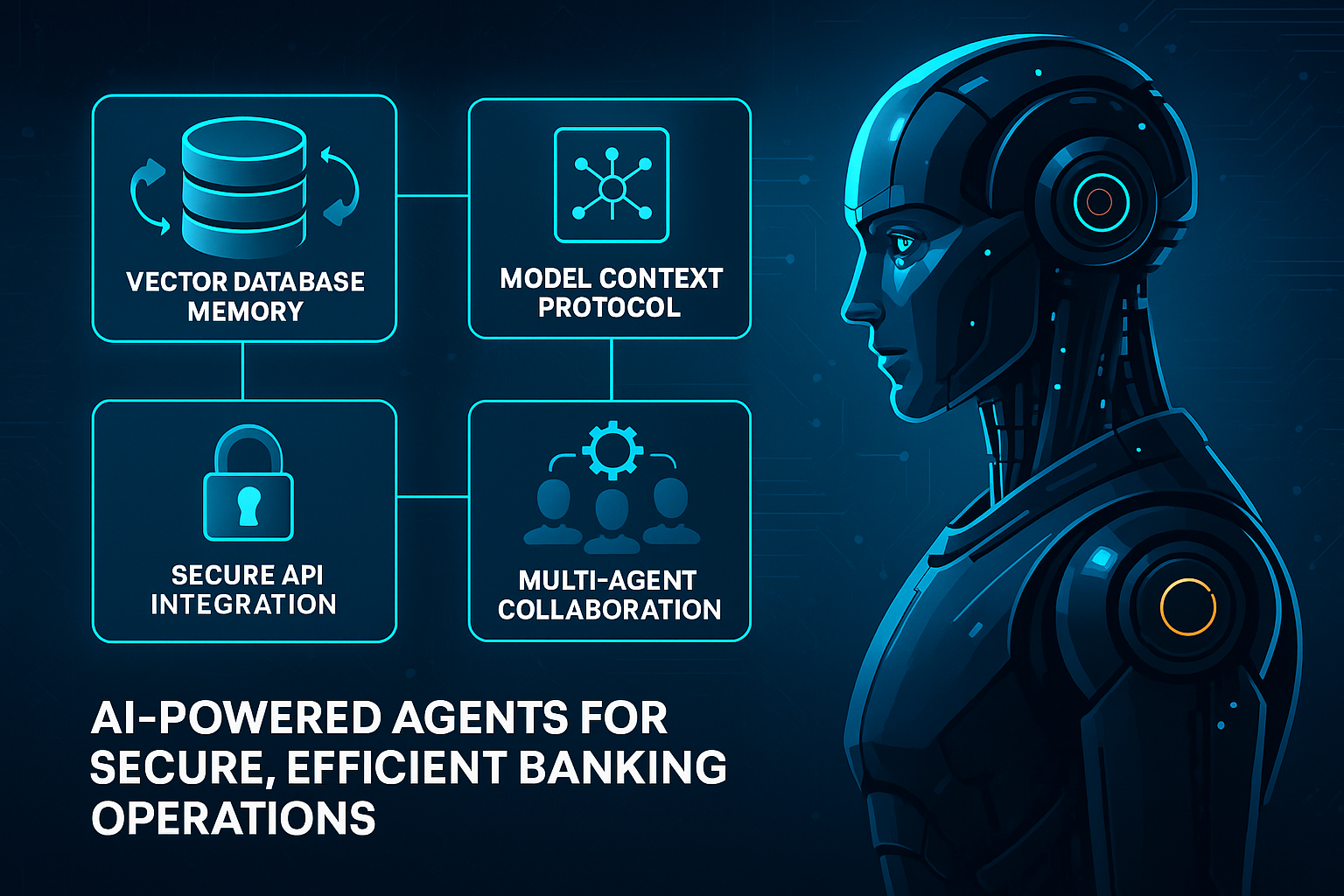Join our WhatsApp Community
AI-powered WhatsApp community for insights, support, and real-time collaboration.
This AI Agent just replaced your entire bank staff — from KYC to fraud to loans — no humans, no hold music, no errors. Is your bank already obsolete?

| Why is AI important in the banking sector? | The shift from traditional in-person banking to online and mobile platforms has increased customer demand for instant, personalized service. |
| AI Virtual Assistants in Focus: | Banks are investing in AI-driven virtual assistants to create hyper-personalised, real-time solutions that improve customer experiences. |
| What is the top challenge of using AI in banking? | Inefficiencies like higher Average Handling Time (AHT), lack of real-time data, and limited personalization hinder existing customer service strategies. |
| Limits of Traditional Automation: | Automated systems need more nuanced queries, making them less effective for high-value customers with complex needs. |
| What are the benefits of AI chatbots in Banking? | AI virtual assistants enhance efficiency, reduce operational costs, and empower CSRs by handling repetitive tasks and offering personalized interactions. |
| Future Outlook of AI-enabled Virtual Assistants: | AI will transform the role of CSRs into more strategic, relationship-focused positions while continuing to elevate the customer experience in banking. |
Traditional chatbots in banking were often just glorified FAQs. Ask them anything outside the script, and they'd hit a wall. But with the rise of Agentic AI in banking, the landscape is shifting dramatically. Agentic AI refers to AI systems that can reason, act, and adapt autonomously within dynamic environments—making them ideal for high-touch, highly regulated industries like banking.
In this new paradigm, instead of bouncing customers across departments or IVRs, banks deploy one intelligent AI-powered digital agent that handles the entire journey—whether it’s verifying identity, customizing a loan, or spotting suspicious activity.
In this new paradigm, instead of bouncing customers across departments or IVRs, banks deploy one intelligent AI agent that handles the entire journey—whether it’s verifying identity, customizing a loan, or spotting suspicious activity.
Imagine this real-world scenario:
A customer opens a banking AI chatbot window with a basic request: “I want to increase my credit limit.” What unfolds next is a tightly orchestrated, autonomous AI agent banking operation run by an Agentic AI system:
The agent first verifies the customer’s identity:
This alone replaces what would usually involve 2–3 teams and a lot of manual work.
Once the KYC check clears, the AI agent dynamically analyzes the customer’s financial profile:
Then it generates tailored loan or credit increase offers—with details like:
It even offers a side-by-side comparison and answers follow-up questions—instantly, thanks to advanced NLP and chatbot NLP frameworks.
Before confirming the transaction, the agent performs an additional fraud sweep:
If no threats are found, the credit limit is increased automatically.
And the best part? This all happens in under two minutes.
Discover how AI agents are phasing out static support systems in Loopback AI Agents Are Replacing Static Customer Support
Old-school banking bots follow static workflows. They rely on rigid intents, scripted decision trees, and siloed APIs. Any deviation or complex query requires a human agent or backend system.
By contrast, Agentic AI agents, structured within a modular agentic framework, are built to:
They work across channels—whether it's web chat, mobile app, WhatsApp, or even voice—offering geographically localized support in multiple languages. This is the new benchmark in AI customer support banking.

At the core of these AI-powered digital agents lies a convergence of several technologies:
Together, they create an architecture that’s secure, autonomous, and enterprise-ready—defining the new gold standard in agentic AI use cases.
Looking to choose the right AI vendor? Here's What Every Leading Financial Organization Should Ask an Agentic AI Vendor
Deploying Agentic AI in banking support systems isn’t just about reducing headcount. Generative AI in banking is not just supporting decisions—it’s driving them. It fundamentally transforms operations:
As banks evolve, Agentic AI workflows are expanding beyond just support into strategic business areas:
Banks are moving from channel-specific bots to enterprise-wide autonomous workflows.
Let’s break down how banks typically structure a live agentic ai integration:
These modular pipelines exemplify how banking AI chatbots can move beyond scripts and perform like human teams.
One of the biggest barriers to deploying advanced AI in banking is regulatory scrutiny. From GDPR in Europe to RBI guidelines in India and OCC audits in the U.S., financial institutions are under a microscope. But Agentic AI—when implemented correctly—can actually enhance compliance rather than complicate it.
These systems can:
In fact, some banks are already using Agentic AI to automate regulatory reporting and conduct internal compliance checks on support conversations—flagging deviations before they escalate.
The result? AI agents that don’t just assist—they regulate, safeguard, and scale with confidence.

In geographies like Southeast Asia, Africa, or Latin America—where banking penetration is rising fast but human infrastructure is lacking—Agentic AI offers a leapfrog opportunity.
It’s not just about cutting-edge tech—it’s about democratizing financial access at scale.
Explore the faces of tomorrow’s banking AI in Top 10 AI Banking Avatars
The dream of a single smart banking assistant isn’t sci-fi anymore—it’s production-ready.
Agentic AI workflows aren’t just better chatbots. They’re autonomous AI agents for banking, full-stack, decision-making digital employees who never sleep, forget, or go off script.
From KYC and fraud to loans and onboarding, these agents are already replacing large chunks of call centers, back offices, and CRM desks.
See how AI agents are directly impacting conversion in AI Chatbots Can Turn Clicks into Conversions
And as tools like MCP, vector memory, and secure multi-agent systems mature, the future of banking won’t be built by scripts—it will be powered by agents.
If your bank still thinks “AI support” means FAQs and IVR menus, it’s already falling behind.
Fluid AI is an AI company based in Mumbai. We help organizations kickstart their AI journey. If you’re seeking a solution for your organization to enhance customer support, boost employee productivity and make the most of your organization’s data, look no further.
Take the first step on this exciting journey by booking a Free Discovery Call with us today and let us help you make your organization future-ready and unlock the full potential of AI for your organization.

AI-powered WhatsApp community for insights, support, and real-time collaboration.
.webp)
.webp)

Join leading businesses using the
Agentic AI Platform to drive efficiency, innovation, and growth.
AI-powered WhatsApp community for insights, support, and real-time collaboration.